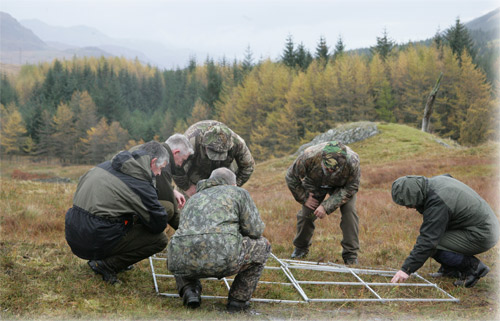
Aim
The Deer (Scotland) Act 1996 places upon Scottish Natural Heritage (SNH) a duty to take into account the impacts of deer on agriculture, woodland, the natural heritage and the threat to public safety. This guide seeks to explain the various ways that the impacts of deer are measured, how ‘damage’ is defined and used within the Deer Act and what this means for owner/occupiers.
Introduction
It is important for deer managers to understand why, when and how ‘damage’ will be assessed. The term has different meanings in different contexts and means different things to different people.
Impacts by deer are measured and assessed against various legitimate objectives in order to determine if damage has occurred, is occurring or is likely to occur.
‘Damage’, as used throughout the Deer Act is then defined as ‘a change in state that is regarded as detrimental to legitimate objectives’.
Consequently, the assessment of damage is dependent on the legitimacy of the objectives in question and the seriousness of that damage as related to local circumstances.
What types of objective are considered legitimate?
Public Objectives: These are recognised in law through a variety of means, including:
- Formal designations which identify discrete areas of land and define key features of local, national or international importance that have to be protected from damage (See Natural Heritage Statutory Designations);
- Legal protection for habitats and species outwith designated sites.
Private Objectives: The Deer (Scotland) Act 1996 makes provision for protection of objectives relating to:
- agriculture,
- woodland,
- natural heritage.
In determining damage SNH respects the right of owner/occupiers to determine when damage is occurring and how serious that damage is (see BPG Habitat Impact Assessment: Analysis).
How is damage assessed?
Damage to Public Interest
An assessment of damage is always made in the context of the legal protection offered to a site and the extent to which this allows the private objectives to be overridden. In certain cases on the most important international sites, nature conservation may be the primary objective. Damage is assessed by comparing the current state of key features against the conservation objectives for the site.
If objective information is unavailable SNH may put in place baseline monitoring against which future change can be measured, using the methods highlighted in BPG Habitat Impact Assessment guides and assessing impacts to a variety of habitats.
In situations where deer have caused, are causing or are likely to cause damage, SNH will work with owners/occupiers and other agencies, following the Joint Working Process detailed in BPG Deer Impacts on Designated Sites, in order to secure effective management of grazing.
Damage to Private Interest − agriculture, woodland or natural heritage
In many situations owner/occupiers have powers to cull deer in the closed season without authorisation, to prevent serious damage to their land use objectives; in exercising these powers the responsibility is on the owner/occupiers to define the nature of the deer impacts and why in their view this constitutes serious damage.
Should an authorisation be required from SNH the onus for defining damage remains with the owner/occupiers. However before issuing an authorisation SNH may visit the site to clarify the land use objectives and the measures being used by the owner/occupiers to determine damage and to confirm that deer are responsible.
For more information on the authorisation process to prevent damage see SNH Approvals & Authorisations.
